
Most of us can’t live without our morning cup of coffee. You might already make one at home to sip while reading the daily news or pour into a travel mug on the go. Maybe you notice that it doesn’t taste as good as your local coffee shop. Still, you do it anyway because you’re saving money and time. But did you know that learning how to make the perfect cup of coffee at home is easier than you think with the right coffee machine, ingredients, and know-how? Truly, it’ll taste like you just got it from the cafe around the corner you swear makes the best coffee in town.
I have you covered with this comprehensive guide. It includes everything you need to know about making the perfect cup of coffee at home, from start to finish. And there are tips for doing so using a variety of machines.
Key tips for getting the perfect coffee at home
No matter the type of machine you’re using, these tips are crucial to follow.
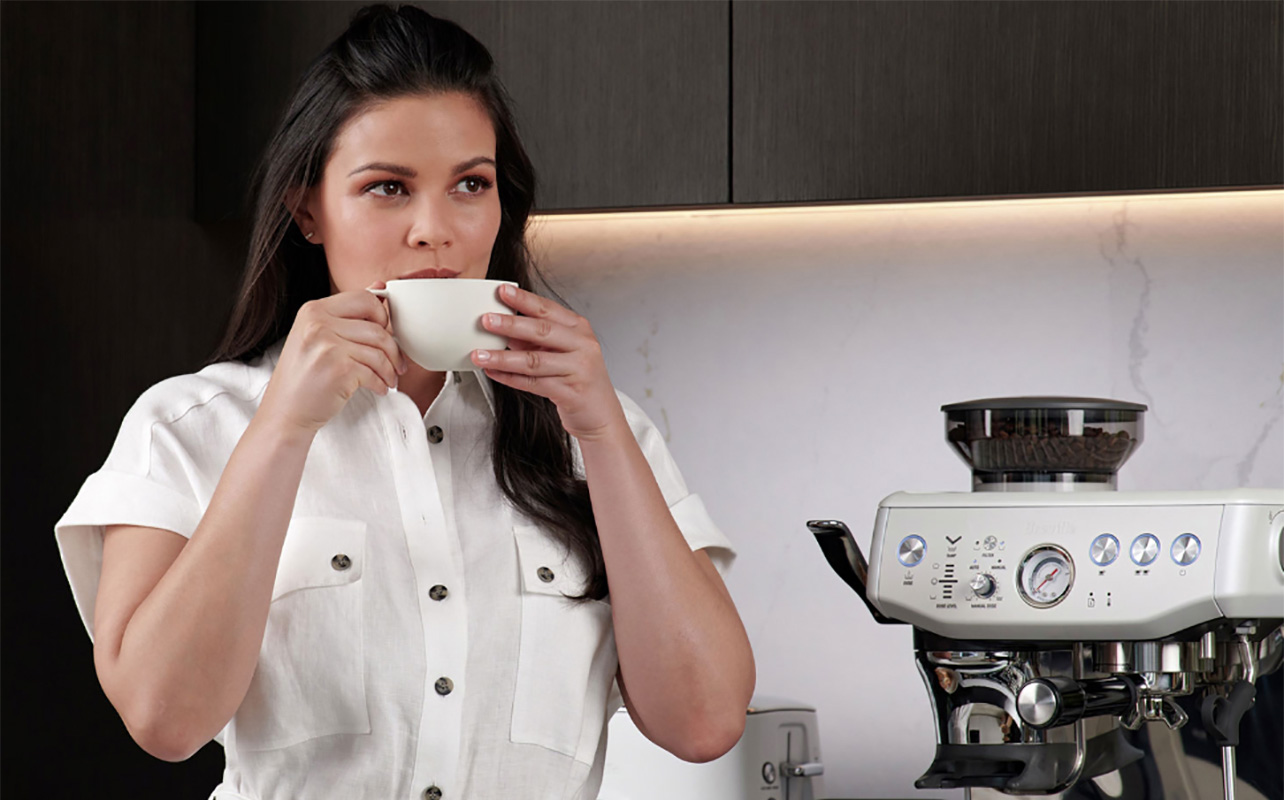
Choosing the right coffee beans
There’s something special about fresh coffee beans. There’s an aroma when you crack open a bar or container that can’t be beat. Fresh coffee beans are the best way to go, which you can grind at home before making a cup. Along with choosing the freshest coffee beans, which you can find at most local grocery stores, consider the type of beans and roast level. You might need to try a few before finding one you love. If the bag is vacuum-sealed, that’s a good indication that it’s of good quality.
Grinding your coffee beans
Some espresso machines come with built-in grinders, or you can buy a coffee grinder separately. If you prefer, specialty shops may grind fresh beans for you. That’s a worthwhile option if you buy your beans weekly. It’s best to grind just before brewing and only grind what you need. Once coffee beans are ground and the surface is exposed to oxygen, they lose flavour and only keep for a few days. You can use a kitchen scale to measure. It takes approximately 10 to 12 grams of beans to get two tablespoons of coffee grinds. If your machine has a container for beans, only fill it with what you’ll need for that day or few days so you get the freshest cup each time.
Storing your coffee beans
It’s crucial to keep coffee beans tightly sealed and packed in an airtight container once opened. Coffee beans lose their taste and that lovely aromatic smell once they are exposed to air, light, heat, and moisture. So proper storage is important. Place the container in a cool, dry, and dark place. Don’t buy large bags if you don’t plan to use them up quickly. Coffee beans last longer than coffee grounds because they contain carbon dioxide to help prevent oxidation and staling. But they still only last for about two weeks at room temperature, after which they’ll begin to lose flavour.
Grind size options
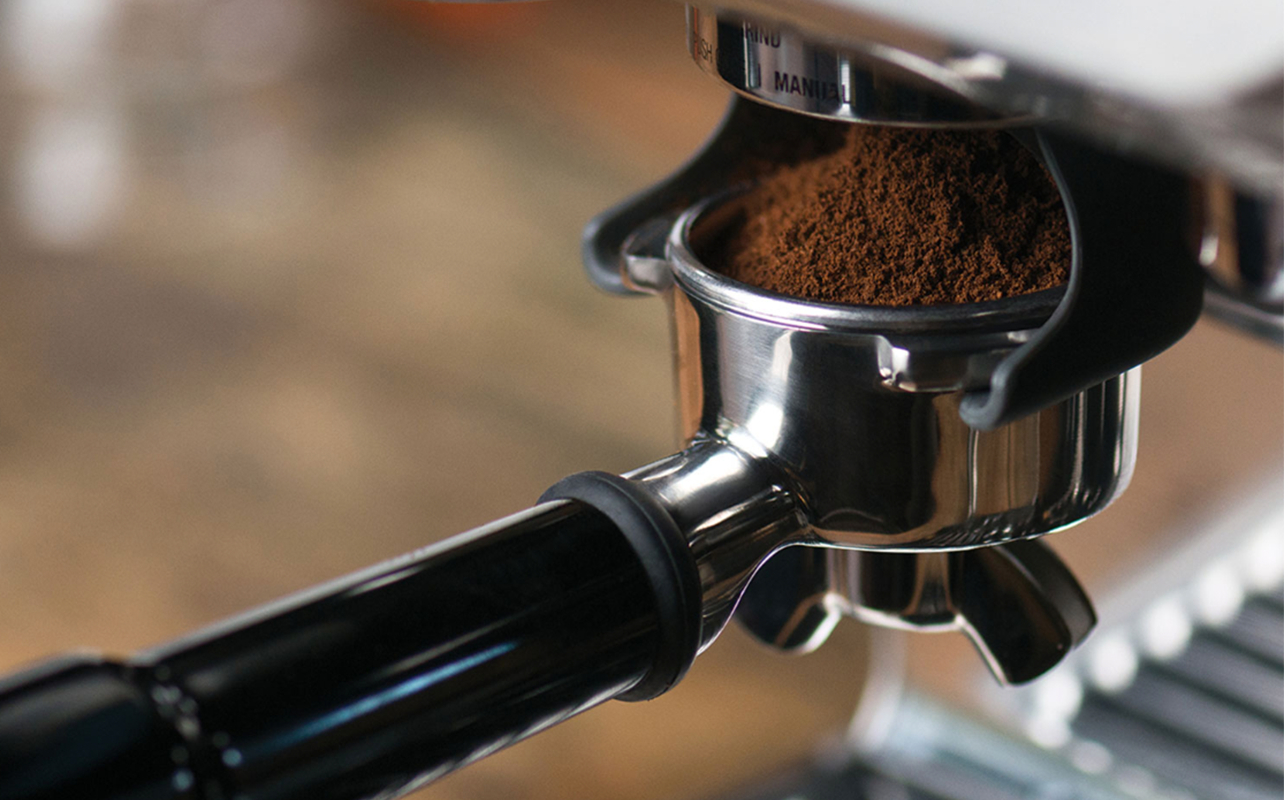
Many espresso machines and coffee grinders allow you to choose the grind size for your beans. What does this mean? The finer the grind, the faster the extraction. If you’re brewing cold coffee, you’ll want coarser grounds. For French presses and pour-over machines, choose medium or coarse grounds. Go with fine grounds for espresso machines (they should look similar to granulated sugar). Turkish coffee drinks require superfine grounds that resemble flour. Grinding beans too coarse can result in coffee that tastes watery and acidic. If your coffee tastes bitter, you might want to grind them a bit coarser.
Water quality
Don’t discount the importance of water. The quality can impact how the coffee tastes. Use filtered water. Some coffee machines come with a hard water filter to filter impurities from the water. The jury is out on using distilled water, as some coffee aficionados believe that the minerals in filtered water are essential to good flavour. Don’t forget to clean the water tank at least weekly to remove mineral and limescale build-up.
Water temperature
Water temperature can impact the taste of the coffee, too. Some machines have different temperature options to suit specific specific drinks and preferences. The National Coffee Association says the perfect water temperature for brewing coffee is between 195°F (91°C) and 205°F (96°C), which is just below boiling. Some espresso machines have an option for iced coffee which outputs stronger coffee at a lower temperature to reduce melting and account for the dilution.
Different coffee brewing methods
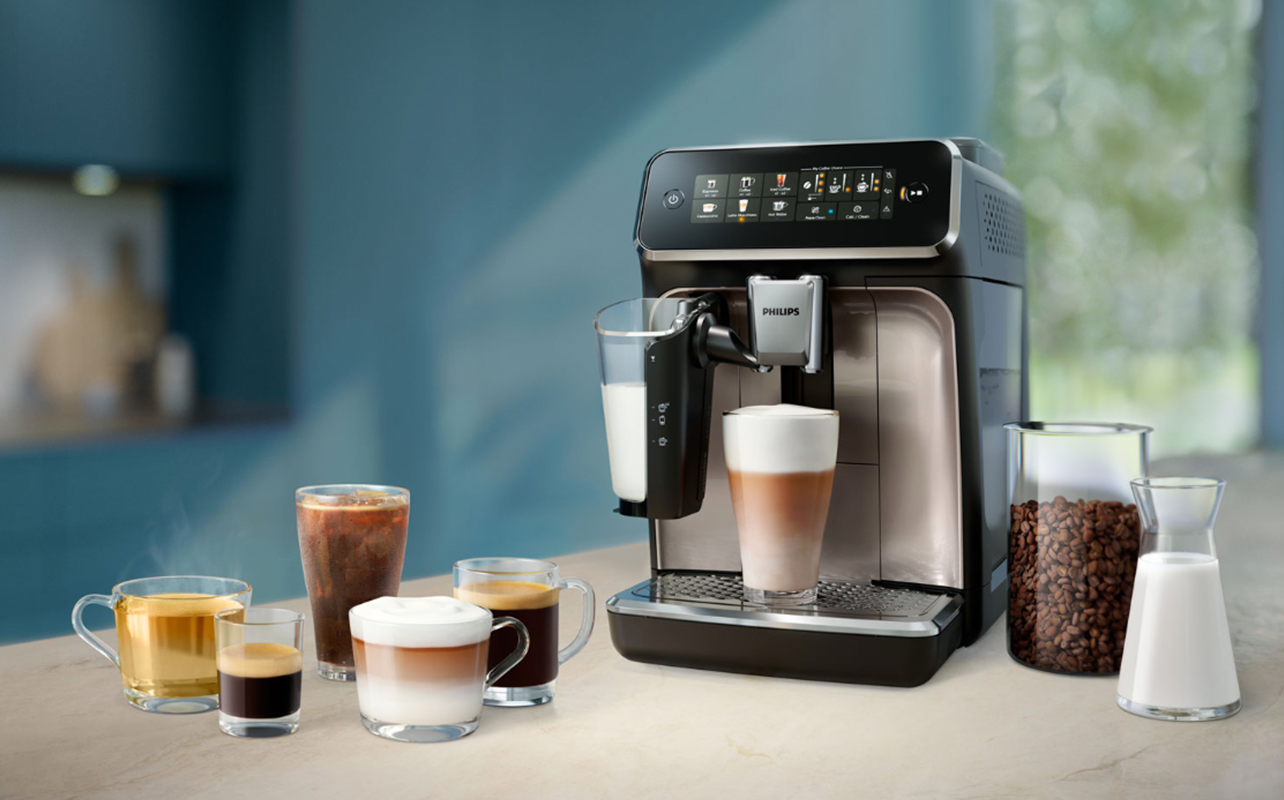
How will you actually make your coffee? There are various methods that yield wonderful results, from fully automatic espresso machines to manual French presses and pour-over coffee makers. You can learn all about each one in this comprehensive coffee maker and espresso machine buying guide. Here, I’ll highlight the most popular options, how they work, and their benefits.
Drip coffee maker
The most common type of coffee machine found in homes for decades is the drip coffee maker. These have a carafe that can hold up to 12 cups of coffee, a filter, and a water tank. They don’t offer a ton of control beyond brew strength. They won’t yield the best cup of coffee, but they’re affordable, reliable, and easy to use.
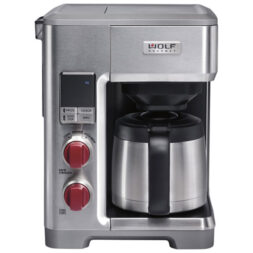
How to use a drip coffee maker
- Fill the tank with water.
- Add a filter and coffee grounds. They should be the consistency of fine table salt.
- Press a button to select how many cups you want and, with some machines, the brew strength.
- It will take about 10 minutes to get a full pot as it heats up and the coffee slowly drips through. The carafe, meanwhile, can keep the coffee warm for a few hours if you need another jolt of java.
Espresso machine
Espresso machines are typically larger countertop appliances that can make delicious espresso to drink on its own or for drinks like lattes, cappuccinos, Macchiatos, and more. Many come with built-in or companion milk frothers. Some have hoppers to hold and grind fresh beans, or you can use a separate grinder. Some have tampers for the coffee grounds so you can more precisely control the flavour profile and strength.
There are manual, semi-automatic, fully automatic, and super-automatic espresso machines from which to choose, so there’s an option for every level of control and ease of use. You can customize the flavour to your liking by choosing the right beans, adjusting grind size, setting the water temperature, and more.
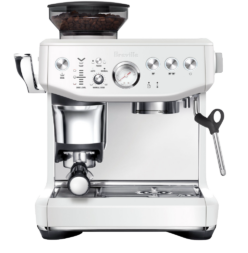
How to use an espresso machine
- Add the coffee beans and/or grounds to a hopper or tamper.
- Adjust the settings for strength and grind size (if the machine grinds the beans for you). You can play around with different grind consistencies based on your personal preferences and the types of drinks you’re making.
- Select cup size, drink type, and more, with options varying for each machine.
- Press the start or specific brew button, and let the machine do its thing.
- If you’re making a coffee-based drink, froth the milk then pour over the coffee. Some machines froth and add the milk automatically. If so, add the milk and point the spout towards the cup so the milk is added automatically once the coffee is brewed.
French press
An ultra-simple yet flavourful way to make coffee, a French press operates completely by hand. There’s a bit of a learning curve when using a French press, even though they don’t use electricity. But it’s known to be one of the best ways to make coffee, allowing you to control the flavour based on how long you let it steep.
The process takes longer than an automatic machine and it requires a separate kettle or pot to boil the water. But the extra work and the wait will be worth it. The benefit is that clean-up is a cinch.
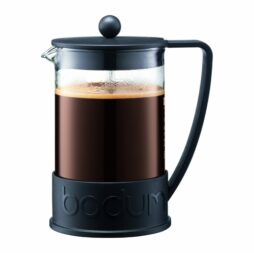
How to use a French press
- Boil water in a separate pot or kettle.
- Grind the beans (or use pre-ground beans) and add them to the press. Use a coarser setting so they resemble breadcrumbs.
- Pour boiling water over them. (Wait about a minute after boiling to get it to the right temperature). Then, stir gently to combine.
- Place the lid on, but don’t press the plunger yet.
- Let it steep for the desired duration.
- Slowly push the plunger down to separate the grounds from the coffee.
Pour-over coffee maker
Pour-over coffee makers use a similar manual process to French presses. They consist of a carafe along with a funnel-shaped device to place over the top. You get a better level of control with pour-over coffee makers since you can determine everything from the temperature of the water to how long you let the coffee brew. Like a French press, a pour-over coffee maker requires a separate pot or kettle to boil the water and the process takes longer. But the flavour profile is intense and aromatic.
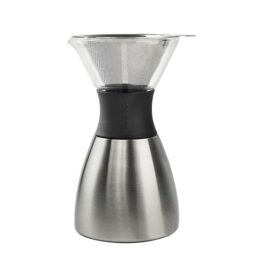
How to use a pour-over coffee maker
- Boil water in a separate pot or kettle.
- Add a filter to the funnel and place it overtop the carafe.
- Add coffee grounds you’ve already made from your beans (or purchased pre-ground). The consistency should be like granulated table salt.
- Pour boiling water over the grinds (wait about a minute after boiling to get it to the right temperature) and the coffee will slowly filter through into the carafe, sort of like a standard drip coffee maker. It should take about three-to-four minutes.
Additional tips for making the best cup of coffee

Beyond what’s provided, here are some additional tips to help you get the most delicious drink.
Maintain the right coffee-to-water ratio
Along with using filtered water to ensure you get the best flavour, using the right amount of water can impact the taste, texture, and flavour of a cup of coffee. Coffee experts say that the perfect ratio is one-to-two tablespoons of freshly ground coffee for every six ounces of water. So, to make an 8-ounce cup of coffee, you’ll need about two-to-four tablespoons of coffee grounds, depending on how strong you like it.
Clean your machine regularly
Along with cleaning the exterior of the machine, part of cleaning a coffee maker is descaling it to remove mineral deposits that form inside the machine over time. When this builds up, it can slow down the flow of water, impact the taste of your coffee, and impede its operation. There are coffee maker cleaning tabs and solutions, many offered by the brands themselves, specific to their machines. Run the cleaner through the machine every 3-4 months. Run a few cycles after and dump out the water to flush the machine before brewing the next cup. Alternatively, you can use a mixture of vinegar and water. Clean the main parts, like a carafe, milk jug, or tamper, after every use.
Enhancing the flavour with additional ingredients
If you’re not just drinking straight espresso or enjoying a pick-me-up black coffee, you’ll want to add other ingredients. This might include milk or milk alternative (almond, soy, coconut, or oat beverages), flavouring syrups, sugar or sugar alternative, and more. Invest in quality ingredients. Thicker cream will impart a full, rich flavour while thinner milk will yield a more traditional consistency. Though most frothers work well with milk alternatives, some machines have special settings for these options.
Use a good frother
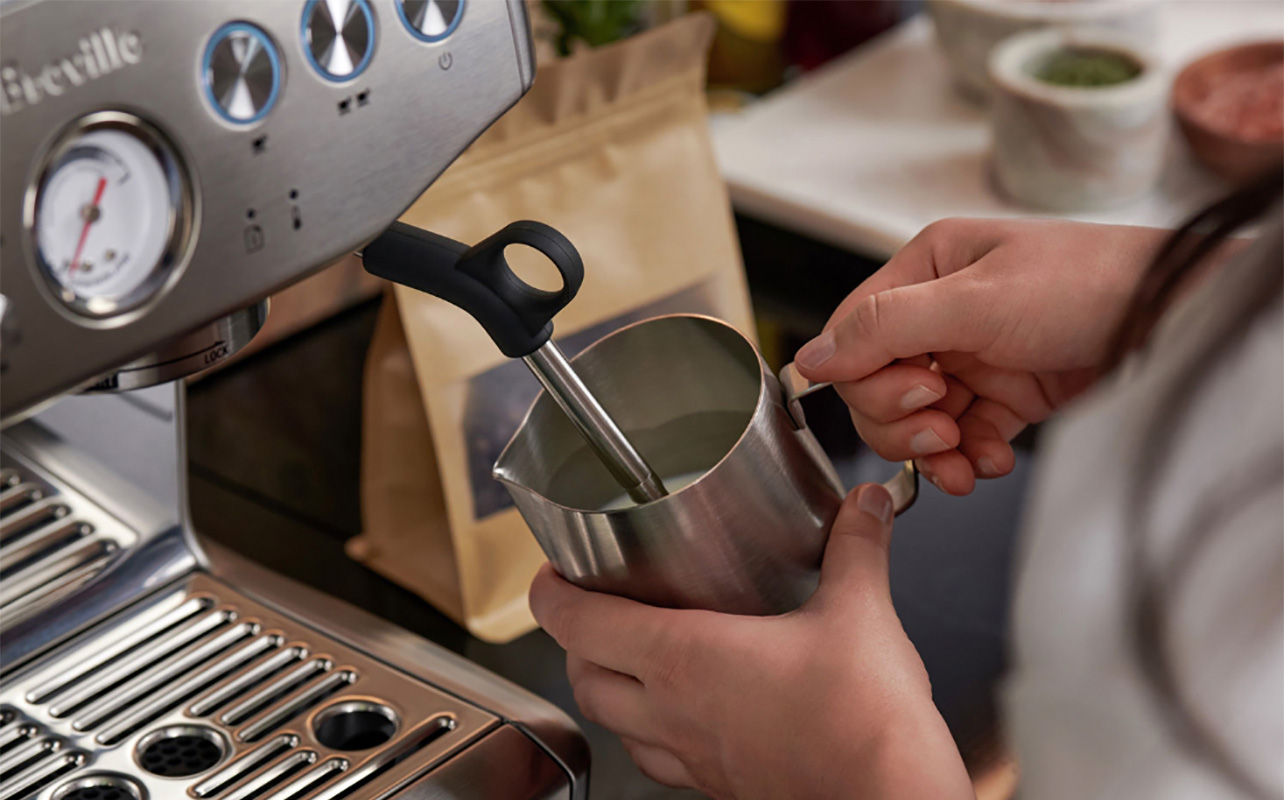
Speaking of the milk frother, if the machine doesn’t come with one built-in or bundled, you’ll want to invest in a good quality one. There are electric and manual options, the latter of which provides better control over the level of aeration and thus froth. Some can froth both cold and hot milk.
Buy the right accessories
From the proper cleaning tablets to quality filters (those bargain bin filters are tempting, but buy better ones), the right coffee accessories are part of the process, too. Stick with items from the same brand as your coffee machine to ensure a reliable experience or go with a reputable third-party brand with good reviews.
Get creative!
Don’t be afraid to get creative as you become more accustomed to using your home coffee machine. Use a toothpick to create latte art. Try unique ingredients like vanilla extract or a dash of cinnamon or nutmeg. For dessert, why not toss in a shot of crème liquor, rum, or brandy?
Elevate your at-home coffee game
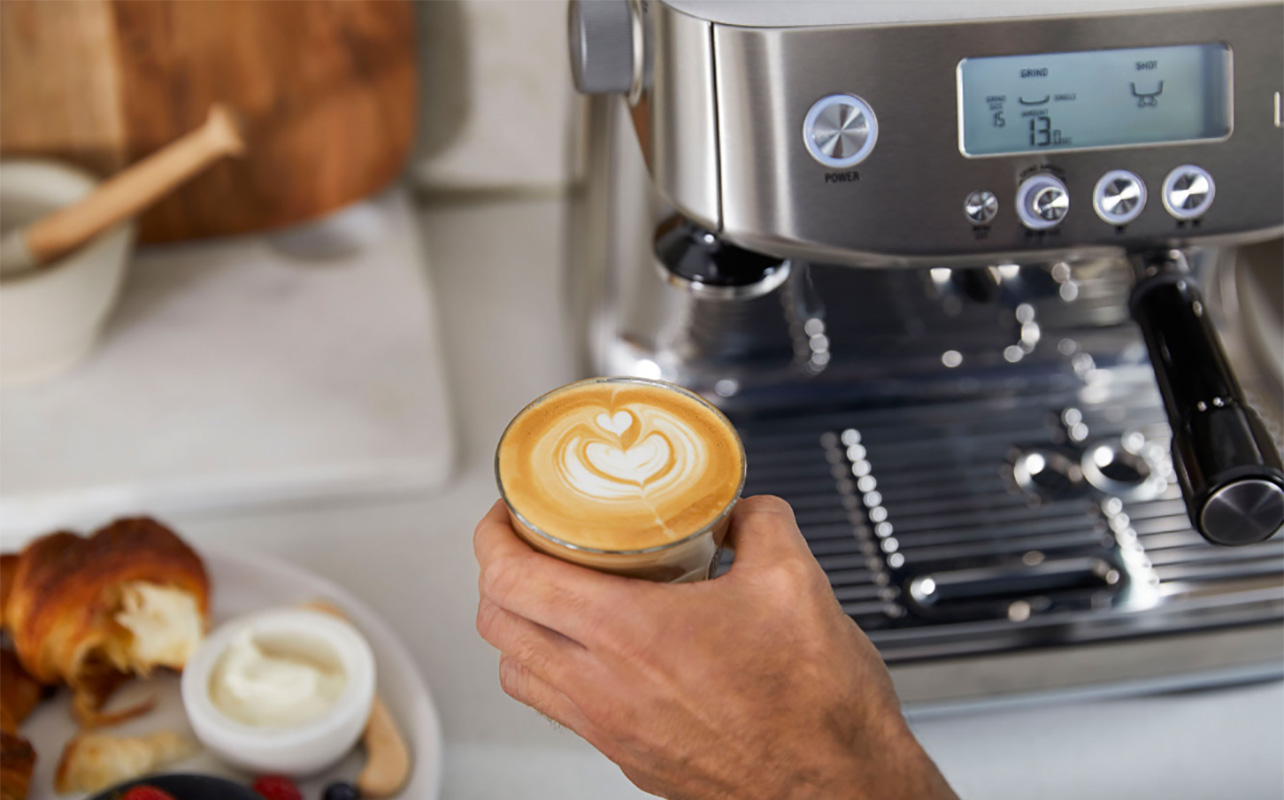
You don’t have to spend a fortune every month on coffee from the local shop. It’s easy to make the perfect cup of coffee at home using your own coffee machine. While the upfront cost might seem daunting, it pays off over time. Getting quality ingredients adds up, too, but it’s worth it in the long run. And you’re still coming out ahead.
Invest in a machine that suits your needs and time constraints, fresh coffee beans, and quality milk products, and you’ll become your own barista at home in no time. Even if you only have a cup a day, why not make it the best cup you can get? Plus, when you entertain, friends and family members will be impressed and asking for second cups.
Best Buy has all types of coffee machines to get you started. For coffee lovers who follow these tips, it’ll be the best investment you’ve made for your kitchen this year.



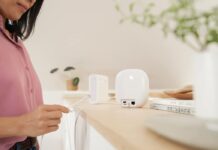


My favorite quickest way of making coffee is actually just using a Tassimo or Nespresso. Definitely doesn’t taste as good as a fresh brewed cup, but it works pretty well!
Making a good cup of morning coffee is an art, and it is fun to make it yourself sometimes, but I prefer to get from outside most of the time! Thanks for sharing the tips It might change my way of consuming 🙂
Comments are closed.